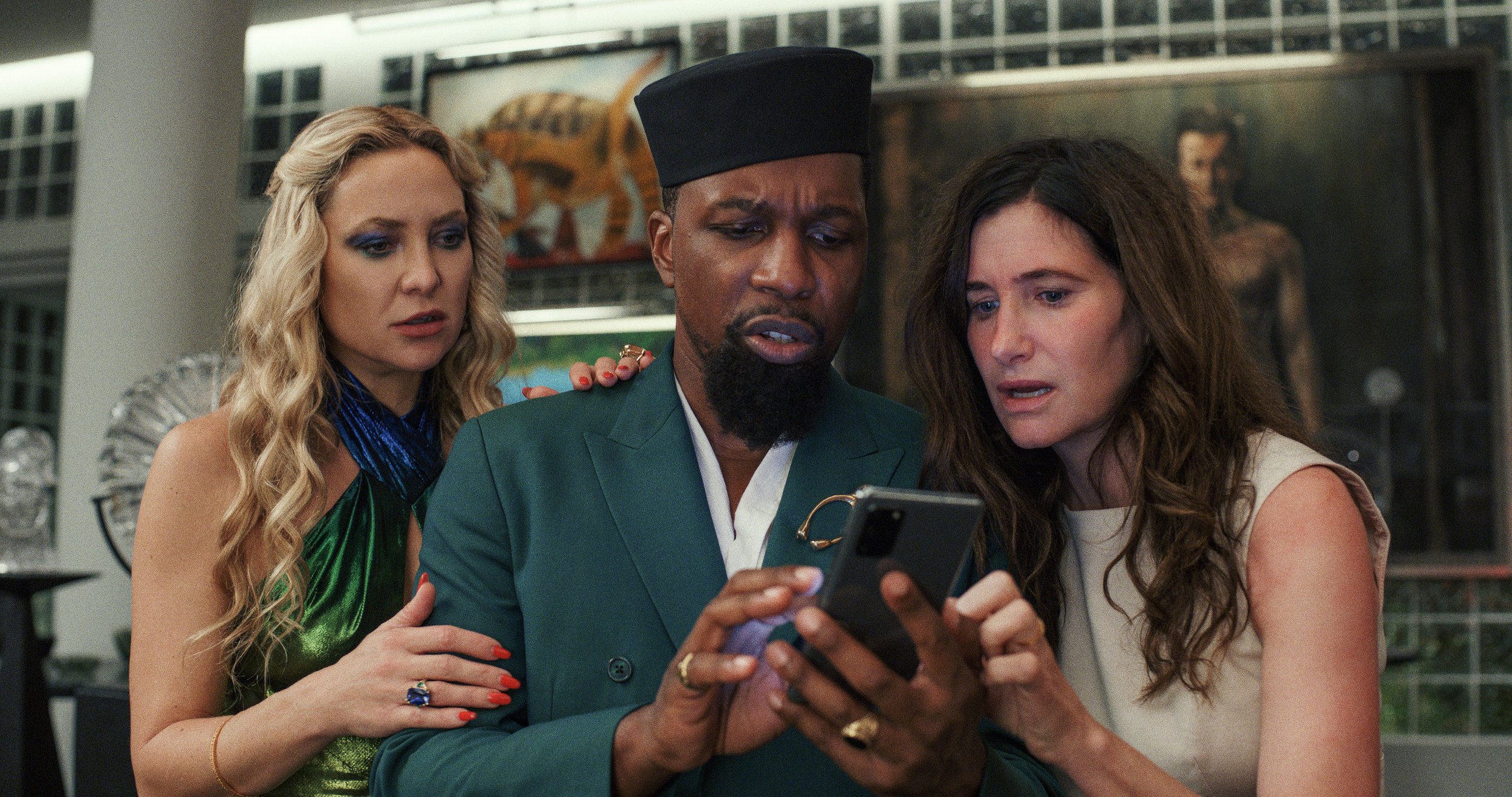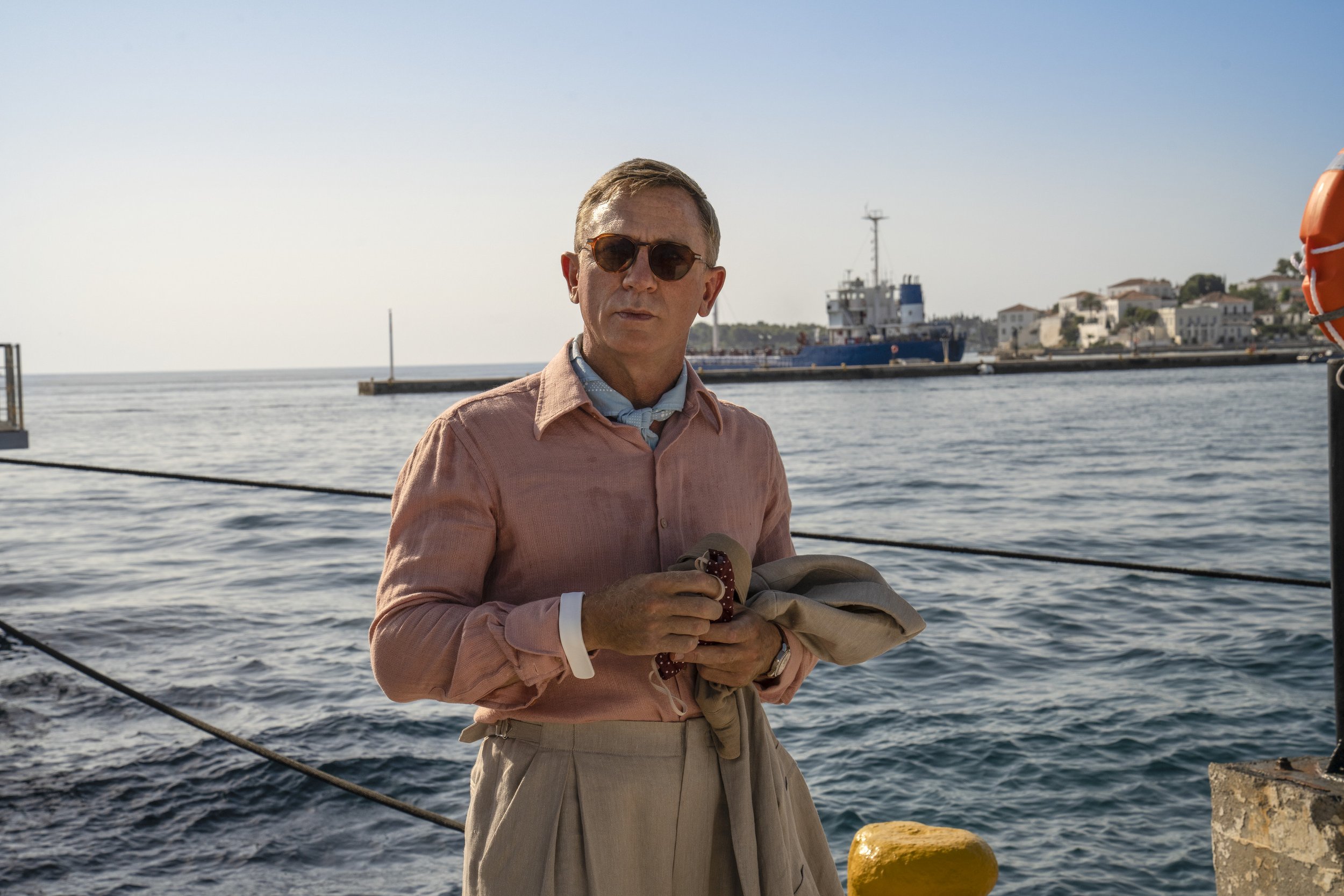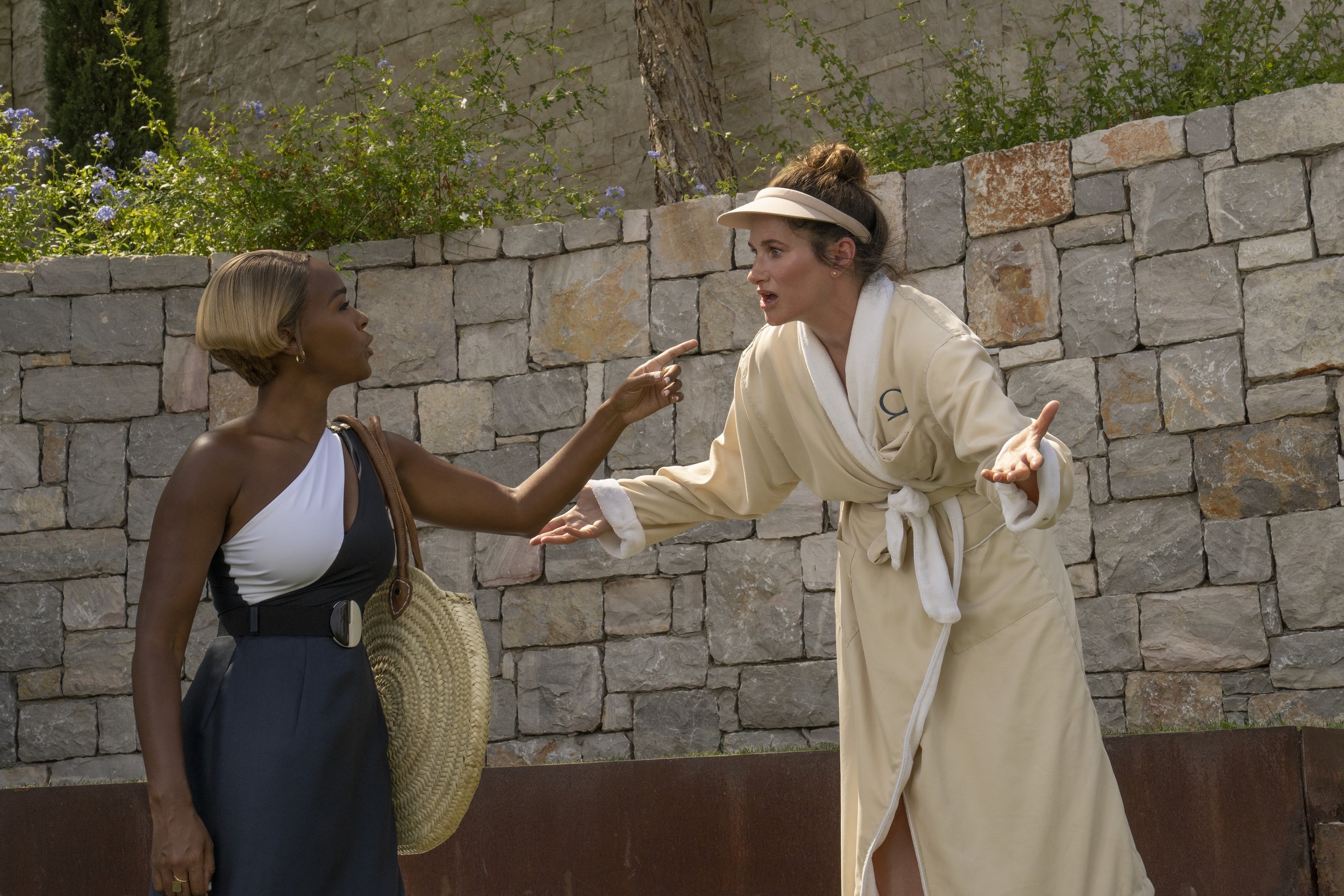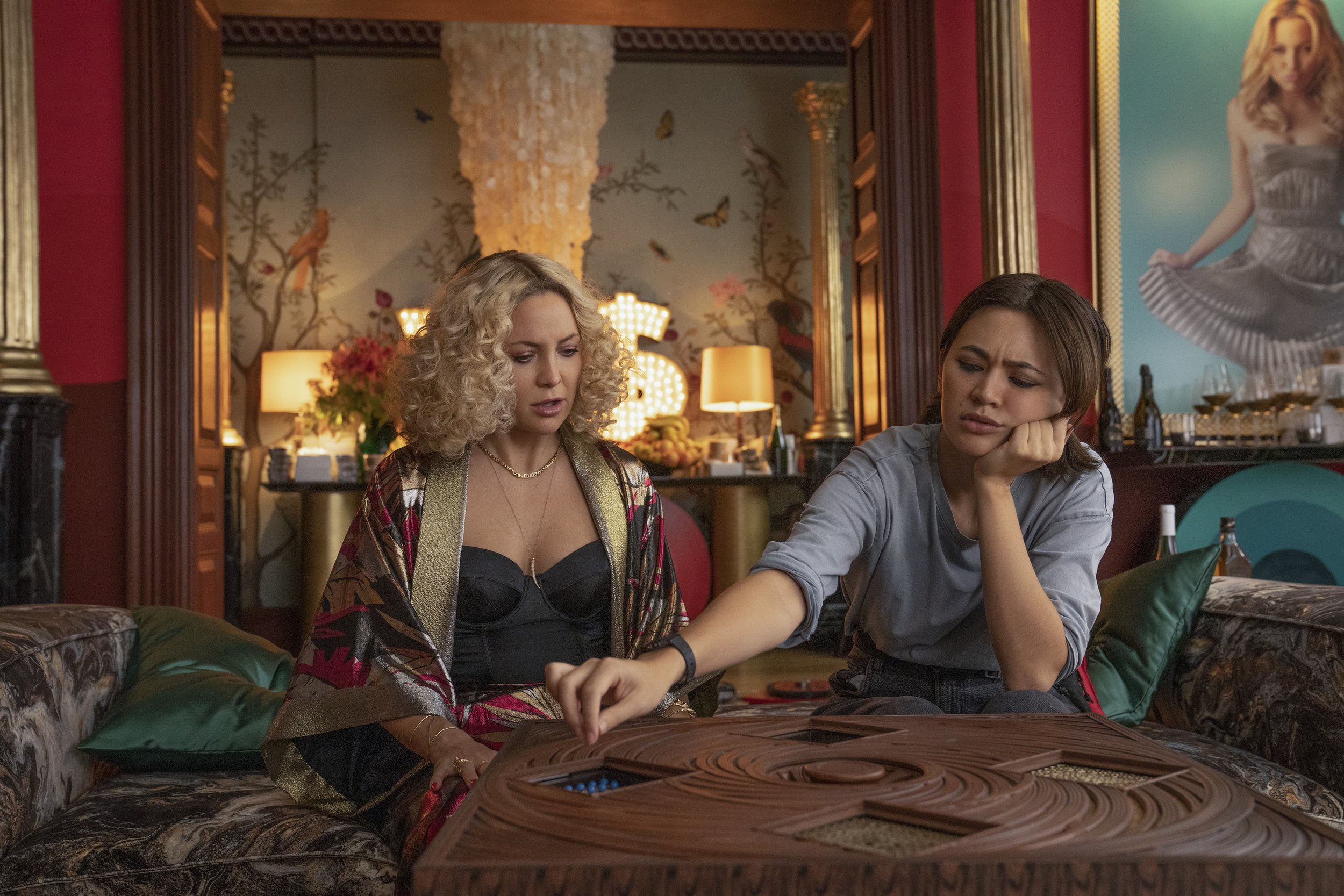Glass Onion: A Knives Out Mystery Review - Rian Johnson Crafts a Different Kind of Whodunit in the Follow-up to Knives Out
I love Rian Johnson’s work, so let’s get that out of the way. Whether it’s Looper (which I’ve about memorized by this point), Star Wars: The Last Jedi (which I saw twice in theaters and three more times when it hit streaming), or Knives Out (which I’ve seen about three times) - he never misses for me. Sure, some elements of his style don’t work, like the timeline shenanigans in Looper, Luke’s characterization in The Last Jedi, and, yes, even some aspects of Ransom’s story in Knives Out.
Johnson has an evident knack for telling a story through a long-winding narrative outside the conventional three-act structure of Hollywood blockbusters. For this reason, I think he’s one of the most exciting directors to watch. In Looper, its purpose is to reward viewers on repeat watches. The same goes for The Last Jedi and Knives Out.
So, when I heard Knives Out was getting a sequel, I was more than intrigued. The first film had set up this world in which Detective Benoit Blanc (Daniel Craig) would, theoretically, continue as the face of the franchise, solving various whodunits with new suspects in each film that serve as Johnson’s critique of real-life celebrities and political movements.
Johnson would prove this theory to be correct when he announced that the title for the follow-up to Knives Out would be titled Glass Onion: A Knives Out Story, a play on The Beatles song of the same name. Glass Onion sees Blanc traveling to Greece to solve a murder with new faces such as Edward Norton, Janelle Monáe, Kathryn Hahn, Leslie Odom Jr., Kate Hudson, Dave Bautista, Jessica Henwick, and Madelyn Cline.
Craig’s portrayal of Blanc is sillier, garnering the biggest laughs of the film in my screening. Blanc is a detective solving a case. All that’s changed is the ratio of jokes to seriousness.
While I’d generally refrain from including clips from the film I’m reviewing, watch the below clip for an excellent example of the balance Craig strikes between his detective work and joking demeanor.
Norton brings a fascinating balance to his character Miles Bron. His billionaire multihyphenate status makes him look like someone trying to make the world a better place with an edge of untrustworthiness (Tony Stark was chewed out by Captain America). Norton walks this fine line excellently, playing Miles as lovable with a snootiness. It almost feels like he’s hung out with tech billionaires for research for this role.
On the opposite side of things, Monáe plays the most captivating character of the bunch, Andi Branch, who co-founded Alpha with Miles. What makes her character so interesting is that going into the film, I knew very little about her and that Monáe portrays Andi with a great deal of restraint. It’s a role that I could see others playing over the top and exaggerating the coldness Andi brings to the narrative.
Hahn, known for her more campy, comedic roles, has taken on a more serious role as Claire Debella, the environmentally friendly Governor of Connecticut who is running for a Senate seat as an independent candidate and is married with two children. The great thing about Hahn in this role is that, like how Monáe plays Andi, Hahn surprised me with the restraint she applied. There are little to no jokes with how she plays Claire, just a series of confrontations with people she doesn’t like and quietly drinking wine on the couch or sunbathing with those she likes. Claire is a complex character that Hahn slowly reveals the emotional layers beneath with each close-up or casual appearance in a dinner scene.
Odom’s role as Lionel Toussaint, the head scientist of Miles’ aerospace company, Alpha Cosmos, is intriguing. Toussaint’s role in the narrative is somewhat of an audience proxy. Odom plays him in a way that showcases Toussaint’s vast intelligence but with a flair of style that simultaneously makes him one of the more grounded characters of the ensemble but makes a huge splash onscreen.
Continuing with the surprises, Hudson’s Birdie Jay, a former model turned athleisure fashion designer, is fantastic. Hudson plays Birdie as though she doesn’t understand where she is half of the time and the life of the party. As one can imagine, this is played for laughs, and with every reaction shot, Hudson gets huge laughs from my audience.
Speaking of huge laughs, Bautista’s Duke Cody, a YouTube influencer, sells questionable health products with the help of his girlfriend, Whiskey. Take the controversial aspects and personalities of Jake Paul & Andrew Tate, and combine them with Bautista’s lovable demeanor, and you’ve got a pretty good idea of who Duke Cody is. Besides the comedy that stems from that cocktail of people, Bautista does a great job combining his athleticism into the character in a way that feels natural and is never played for laughs.
A role that was played for laughs is Henwick’s character, Peg. She has been Birdie Jay’s assistant, minder, social media manager, advisor, and troubleshooter for nearly ten years, a fact weighing on her more and more with each passing year. Henwick, like Hudson, has some relatable reactions to these characters’ absurd levels of wealth, like someone mentioning being on a yacht the week prior and Peg rolling her eyes with disgust. But, on the other hand, Henwick isn’t just there for reaction shots. Henwick also gives space to explore how mentally exhausting it can be to be someone’s handler, for lack of a better term, for so long. You deserve better, Peg!
Last but certainly not least is Cline’s character, Whiskey. Whiskey is the perfect foil to Bautista’s Duke Cody, laughing at some of his insensitive jokes while trying to be more than Duke’s girlfriend.
Despite my praise of its excellent ensemble cast, I need to call to attention a nitpick I have with how Johnson utilizes these cast members. I love the popcorn-style nature in which he develops each character and unfolds the mysteries behind their motivations behind their decision to come to Greece. Still, it can often lead to some characters needing to be more developed. Specifically, I would’ve loved to see more of Duke Cody, Whiskey, Peg, Birdie Jay, Lionel Touissant, and Claire Debella. Their roles fade into the background at points where their characters feel like set dressing at times, and those characters could’ve been given more runway. I get it’s an ensemble piece, but it’s still annoying.
This brings me to the screenplay written by Johnson. Unlike its predecessor, Knives Out, which was focused on the puzzle box element of the whodunit, Johnson opts to focus on the group mentioned above of people as the whodunit of Glass Onion. At first, it was an odd shift, but before long, I got the sense that Johnson understood that the more exciting puzzle was the people, not the mystery. Speaking of the mystery, it is something that Johnson is keenly aware that the audience is trying to solve, and he subverts the audience’s expectations at every turn. In turn, he’s also made a much funnier film that is filled with fun audience moments that will encourage audiences to rewatch it over and over again.
The same goes for his direction, which is as sharp as ever. Johnson has a keen eye for what works and what doesn’t in a whodunit, but he also finds ways to improve his original vision alongside his fantastic ensemble cast.
While we’re talking vision, cinematographer Steven Yedlin, who also shot Knives Out, pulls off some fantastic camerawork and shots here. Yedlin shot the film primarily with the Sony ILCE-1 with the Sony ILCE-9 as a backup camera. As for lenses, Yedlins shot Glass Onion with a mixture of Sony FE lenses such as the 24-70mm f/2.8 GM lens, the 50mm f/1.4 ZA Standard Prime ZEISS lens, the 70-200m f/2.8 GM OSS lens, and the 16-35mm f/2.8 GM Wide-Angle Zoom lens.























For those of us who aren’t familiar with the terminology, the Sony ILCE-1’s strength is that it’s small, so the camera can be set up for a range of shots, but given the camera was paired with lenses that highlight people in the frame, making them stand out from the background. The ZEISS lens is excellent for light intensity and bokeh, so that’s great for some of the conversation scenes that Glass Onion features. The ILCE-9 and the lenses it’s paired with give the film a cleaner look during action scenes and fit more in the frame due to the GM Wide-Angle Zoom lens I mentioned earlier.
As for Yedlin’s part in all this, he seems to focus his cinematography on the characters and making sure they are the focal point (cinematography joke not intended, I swear) of each scene while also giving the audience enough time to appreciate the beauty of the sets and locales featured within the scene. One part of the cinematography I enjoyed was when a camera operator picked up the camera mid-scene to change focus that probably should’ve been on the cutting room floor, but that peek behind the curtain made the scene for me.
While we’re peeking behind the curtain, let me talk about the masterful editing by editor Bob Ducsay. Also a long-time collaborator with Johnson, Ducsay hits his stride here to the point where it feels like he’s showing off. So many mystery movies live and die by their editing. Ducsay can construct a narrative that should be highly confusing, given the way it’s constructed, and weave it into something bold, beautiful, and something you’ll want to study for years.
Likewise, Nathan Johnson’s score is so multi-faceted that viewers will need to listen to the soundtrack multiple times before they get a sense of how much his score tells us about these characters without a character saying a word. Johnson’s score is not boisterous but amplifies the experience much more.
Jenny Eagan’s costume design is gorgeous. From Blanc’s ascots to Duke’s outlandish shoes, every costume directly expresses each character and their feelings.
Production designer Rick Heinrichs has crafted an awe-inspiring palette. Heinrichs is just showing off - especially with the design of the Glass Onion itself. There’s so much to look at onscreen, and it all feels opulent and, at the same time, very lived-in.
If you loved the original Knives Out, I urge you to see Glass Onion. It’s as good as the 2019 film - maybe even better.
★★★★★
Glass Onion: A Knives Out Mystery is now streaming on Netflix.
Until next time!
Thanks to Thomas Stoneham-Judge from Movies For Reel, Shane Conto, Joseph Davis, David Walters, Ambula Bula, Matthew Simpson, Thom Blackburn, and Beatrice AKA Shakesqueer, for supporting Austin B Media on Patreon!


